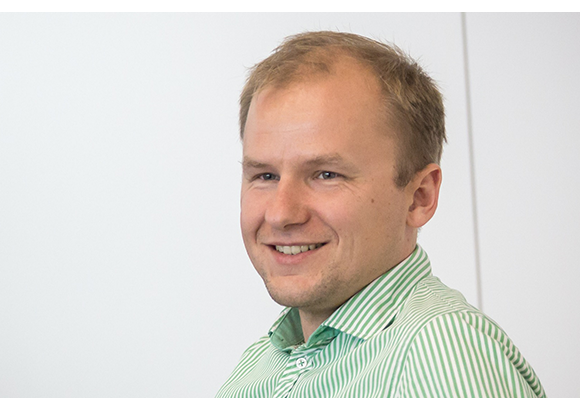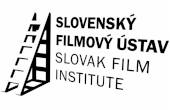 The Future Starts Now: How to find out about the changing media landscape the pragmatic way
The Future Starts Now: How to find out about the changing media landscape the pragmatic way
By Kay Meseberg
Introduction
Surprise happens. To be surprised by an invitation from China happens. Not that this is unusual. But the point of this invitation really was. While travelling the world to talk about the recent VR and 360 activities I have been heading for some years now at the European cultural network ARTE, I was surprised by this invitation in particular because the invitation to this conference in Quingdao was based on an article I wrote five years ago.
The text of my article From Smartphone to SmartTV was published and republished, shared and liked. It was based on the idea to add, with a listical, some enthusiasm to the challenges based on digitalisation that are facing everybody in touch with what is still biggest slice of the entertainment market -TV.
The invitation from China arrived at a moment when the industry had reached a new tipping point. Video is all over the web. It is a driver for new viewing habits. Measures are changing. Video is also blending with and becoming data. To measure attention is already not only a new state of the art it is also a source to feed machines for different applications galore - Machine Learning, AI etc.
While still thinking about my article and about what had changed during the last five years I went further back in time. I remembered reading Manuel Castells during my studies of Political Science. His book The Rise of the Network Society from 1996 was one of the sources for a paper I wrote in media politics. In those days my professor, who was then an advisor to the chancellor of Germany, failed me on this paper. It seemed too much like science fiction what I wrote back then. Still it bugged me as far as I remember. It was the only paper that was not accepted during the whole of my studies. Today the words of Castells are more relevant than ever. Because he described more than 20 years ago in parts the media reality of today.
1 Real Virtuality
Manuel Castells is a Spanish sociologist. He has taught in Cambridge, California, Catalonia and Paris. His research about the information society, communication and globalisation is widely anticipated. Here in the book I mentioned the focus is on chapter five of The Rise of the Network Society. Just take the title: The Culture of Real Virtuality: The Integration of Electronic Communication, the End of the Mass Audience, and the Rise of Interactive Networks. Read it twice. This is something that was in 1996 fast forward thinking. With a tiny bit of understanding of Moores Law and the technical capabilities of computers you would have been able to get the sense and the future impact.
Castells went even further: “Software companies, from Microsoft to Japanese video-games creators such as Nintendo and Sega, were generating the new interactive know-how that would unleash the fantasy of immersion in the virtual reality of the electronic environment. Television networks, music companies, and movie studios were cranking up their production to feed an entire world supposedly hungry for info- entertainment and audiovisual product lines.” Castells wrote this a year before Google was founded, years before YouTube or Facebook were founded and before Netflix introduced binge watching to the entertainment sphere. He wrote it in the year the first smartphone was released to market and eleven years before the iPhone and a year later Android based smartphones started to change the habits of billions. He wrote with the knowledge of the capabilities of gaming platforms but before Unity became as a game engine one of the Swiss knives of all sorts of interactivity. These two phrases tell us more than his visionary view. They explain quite accurately the new entertainment reality of today based on the web. But the story moves on.
2 On the Horizon
In Europe broadcasting is maybe not as shaken as in North America by cord-cutting. Still this is a sign, the sign given often by millennials that represents a fundamental change in the user behaviour today with audiovisual content, maybe later even more with more and immersive forms of representations of oeuvres and contents. Challenges are in front of us. The question is how to cope with it. Is it necessary to jump on and take a ride on every hype cycle or not?
Basically it is important to know what is going on and to find out early what is likely impact. The understanding of how technology changed things in the past is extremely helpful. How was it when the first radios, TV sets or telephones came to the market? When was an idea born and when did this idea disrupt? Taking Nikola Telsas’s idea of something like the internet as an example - the disruption happened around 100 years later.
An important question is also: What are the more or less constant things? The answers to these and more questions give a good feedback loop when things need to be understood for further actions. At ARTE as a public broadcaster we look usually with a quiet pragmatic perspective on new things coming up on the horizon:
- Does it make Wow?
- Can this new technology tell existing stories in a way that it suites the oeuvre?
Then we take it from there of course in collaboration with creative producers, and other institutions to create in the best sense design thought products and oeuvres that also show how the media landscape is changing. It is good to have a network to take the ride together on the Gartner Hype Curve. Why? Because the future starts now.
Kay Meseberg studied Political Science at University of Potsdam in Germany. He worked until the end of the 90s on many award-wining digital productions and as a journalist. Since 2013 he is working for ARTE in Strasbourg, France. After his contribution to the world-first VR-documentary Polar Sea 360 in 2014 he is working on immersive media and other innovative forms and heading the ARTE unit dedicated to upcoming technologies. Kay is also a visiting lecturer for the Center of Collaborative Arts and Media at Yale University.



















